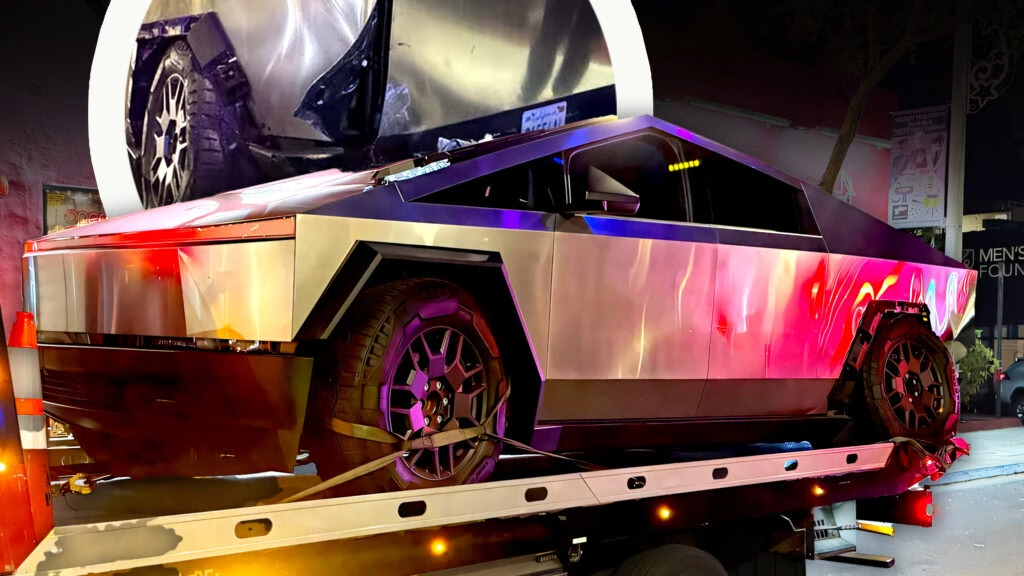When it comes to high-profile vehicle testing, the journey can sometimes take unexpected turns. Just ask Edmunds, which recently faced a rollercoaster ride with its Tesla Cybertruck Foundation Series. Purchased for a whopping $101,985 in July 2024, this electric vehicle was supposed to be a star in their One-Year Road Test fleet. However, by December, it had already encountered a series of unfortunate events that would ultimately lead to its demise.
The Cybertruck was parked when a compact sedan collided with it, pushing the hefty 6,600-pound vehicle onto the curb. The damage was extensive, and Tesla’s service centers took two months to evaluate the situation, ultimately declaring the truck a total loss. This incident not only highlights the vulnerabilities of even the most anticipated vehicles but also raises questions about the reliability and repairability of new technologies in the automotive world.
What Went Wrong Before the Crash?
Before the unfortunate accident, the Cybertruck was already showing signs of trouble. Edmunds reported several critical issues shortly after taking delivery. From steering failures to the vehicle going into limp mode, it seemed like the truck was plagued with problems. The air conditioning failed during hot days, and the transmission had trouble selecting Park. These issues were concerning, especially for a vehicle priced at over $100,000. The team couldn’t even conduct their usual testing procedures, much less take it off-road.
The early troubles were a red flag, but the real test came when they attempted to get the truck repaired after the accident. With body shops hesitant to work on the Cybertruck due to its unique construction, they had no choice but to rely on Tesla’s service network. Unfortunately, this presented its own set of challenges.
Navigating the Repair Maze
In Los Angeles, where one would expect a robust network of service centers, only two were certified to handle the Cybertruck’s steel body panels within a 50-mile radius. The first service center in Huntington Beach quoted a one-month wait just for an estimate, followed by an additional six months for repairs. Faced with such a timeline, Edmunds opted out.
The second center in Ontario initially seemed more promising, offering a quicker estimate. However, just days before the scheduled appointment, Tesla informed them that the repair timeline had been pushed back by another month due to overbooking. This back-and-forth only added to the frustration.
The Costs of Repairing a Cybertruck
After two months of waiting, Edmunds finally received an estimate for the repairs. The total bill? A staggering $57,879.89. The breakdown included:
– Rear suspension: $9,149
– Motors and components: $4,191
– Steering: $2,040
– Bed repairs: $8,762.79
– Labor costs: $16,584
Given that a comparable undamaged Cybertruck was valued at $86,160, it simply didn’t make financial sense to proceed with repairs. The vehicle was ultimately deemed a total loss.
The Final Outcome
In the end, Edmunds sold the Cybertruck to Copart for just $8,000. This marked a significant loss for the outlet, making it their biggest financial hit to date, surpassing even the Fisker Ocean. While the Cybertruck did receive praise for its performance, ride comfort, and eye-catching design, the overall experience was far from what they had hoped for.
The big takeaway? The Cybertruck saga isn’t just about a single vehicle; it reflects broader issues in the automotive industry, particularly regarding the reliability and repairability of cutting-edge technology. As electric vehicles continue to gain traction, it’s crucial for manufacturers to address these challenges to ensure that consumers can trust their investments.
So, if you’re considering diving into the world of electric trucks, keep these lessons in mind. It’s not just about the shiny exterior and the latest tech; it’s about the long-term reliability and support that comes with it.

